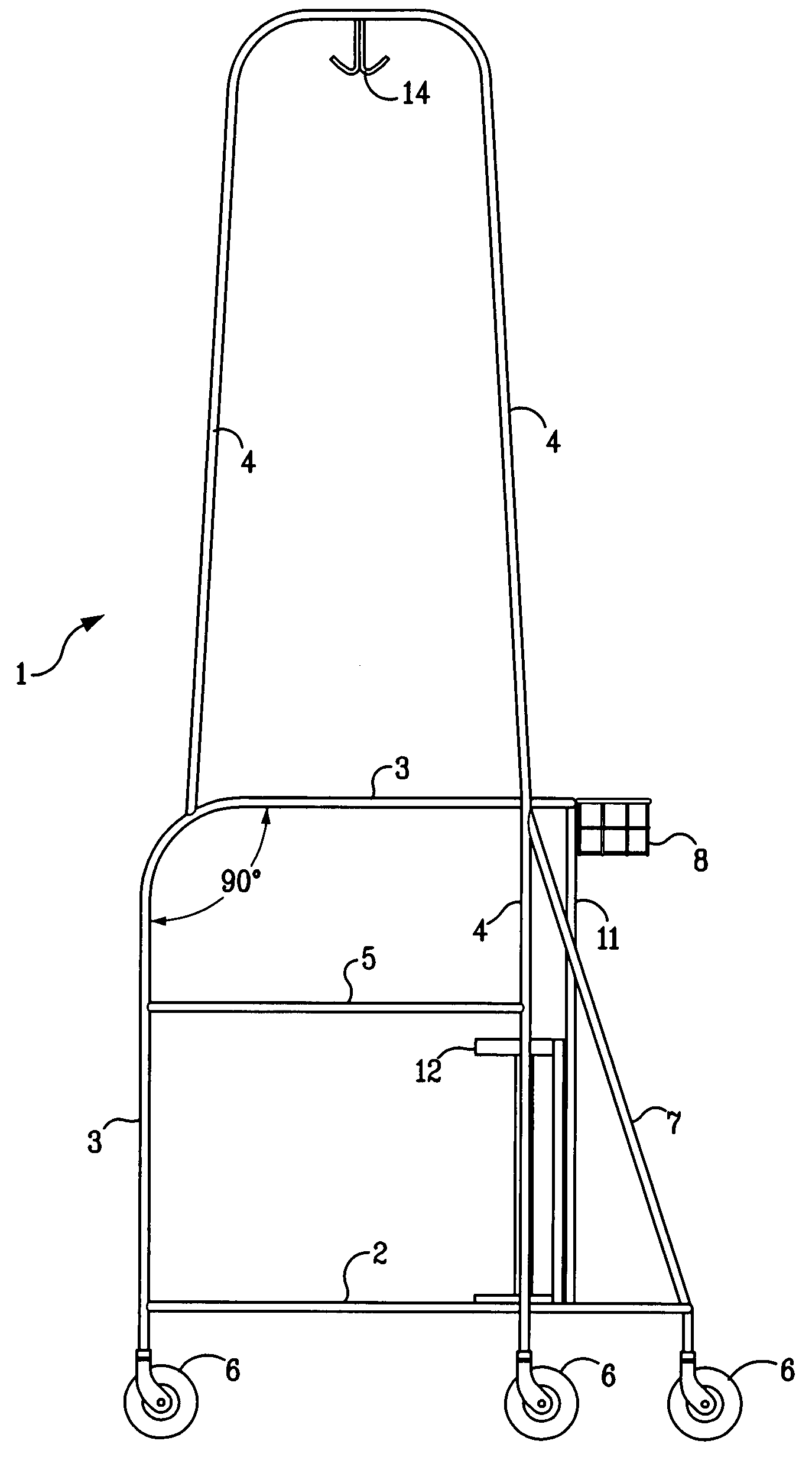Enhanced patient mobility system
a patient mobility and patient technology, applied in the field of enhanced patient mobility system, can solve the problems of patient standing, patient trip and fall, easy upset, etc., and achieve the effect of improving patient mobility system, low cost, and convenient cleaning
- Summary
- Abstract
- Description
- Claims
- Application Information
AI Technical Summary
Benefits of technology
Problems solved by technology
Method used
Image
Examples
Embodiment Construction
[0009]The present invention is a EPMS 1 for use by ambulatory or recovering patients which is of simple design yet is durable, sturdy, mobile and easy to clean. There are three major components to the EPMS. The first is a lower U-shaped base frame member 2. The base frame member like the entire EPMS is preferably constructed of aluminum or light steel tubing. Preferably one-half (½) or (¾) inch aluminum conduit is used. The various parts are fabricated together by welding or other suitable attachment means including but not limited to nuts and bolts, screws, clamping fasteners, adhesives and the like, all of which are known to those skilled in the art. The lower U-shaped base frame member has rounded corners so as not to present sharp corners which could pose a safety hazard or could easily catch on adjacent items. The rounded corners can serve as a bumper means allowing the EPMS to easily glance off items inadvertently contacted while the EPMS is in use. The lower U-shaped base fra...
PUM
 Login to View More
Login to View More Abstract
Description
Claims
Application Information
 Login to View More
Login to View More - R&D
- Intellectual Property
- Life Sciences
- Materials
- Tech Scout
- Unparalleled Data Quality
- Higher Quality Content
- 60% Fewer Hallucinations
Browse by: Latest US Patents, China's latest patents, Technical Efficacy Thesaurus, Application Domain, Technology Topic, Popular Technical Reports.
© 2025 PatSnap. All rights reserved.Legal|Privacy policy|Modern Slavery Act Transparency Statement|Sitemap|About US| Contact US: help@patsnap.com



